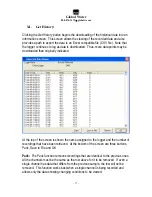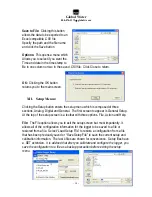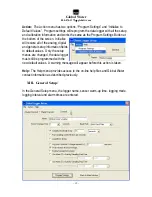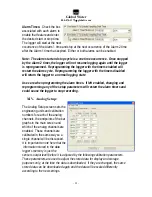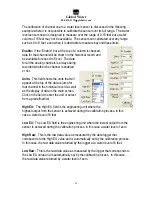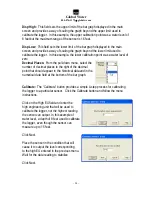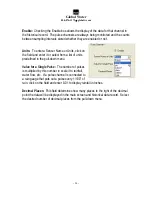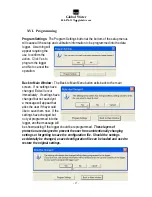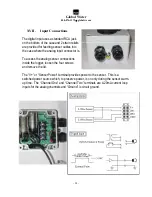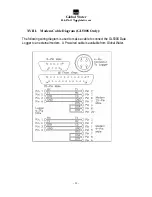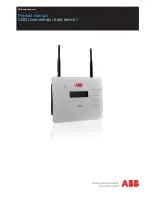
Global Water
800-876-1172
•
globalw.com
- 15 -
Bar Graphs:
The bar graphs show a visual representation of the most recent data
reading taken by using the Sample Continuously or Get Sample functions. The
upper and lower limits of the display are defined by the user as discussed in detail
later.
Numerical Reading:
The numerical reading at the bottom of the bar graph shows
the actual data reading and is updated at the same time as the bar graph.
Successive numerical readings taken by using Sample Continuously or Get Sample
are shown in a list below the bar, up to 5.
Pulse channel:
The GL500-2-1 Data Logger has one pulse channel with a
maximum count of 65,535. At the time of the logger’s normal sampling interval, the
counts are stored in memory along with the other sensor data and time stamp, and
then the counters are set to zero to start the counting sequence over again. The
Pulse Channel 1 field shows how many pulses have been counted since the last
logger recording. For example: If the logger is set to record once per minute and it
is put into Sample Continuously mode, the display will be updated once per second
and as pulses are applied to the pulse inputs, the Pulse Channel fields will update
the count. At the end of the normal one minute sampling interval, the total number of
pulses will be stored in memory and the Pulse Channel field will show zero until
more pulses are applied. Note that the pulse channel can be scaled to show rainfall,
water flow etc. by multiplying the count by a user definable number as described in
detail later.
Alarm 1:
This field shows the time that the logger is set to start logging. The start
alarm is a 24-hour timer which will initiate logging, when enabled, at the next
occurrence of that time.
Alarm 2:
This field shows the time that the logger is set to stop logging. The stop
alarm is a 24-hour timer which will halt logging, when enabled, at the next
occurrence of that time after the logger has started recording. If the Alarm 1 timer is
set to initiate logging, the Alarm 2 timer will halt logging at the next occurrence of the
Alarm 2 time after the logger has been started by Alarm 1. If the Alarm 1 timer is not
enabled, the Alarm 2 timer will halt the logger on the next occurrence of that time.
Note: Use care when programming the alarm times. If left enabled, changing
and reprogramming any of the setup parameters will restart the alarm timers
and could cause the logger to stop recording.

















